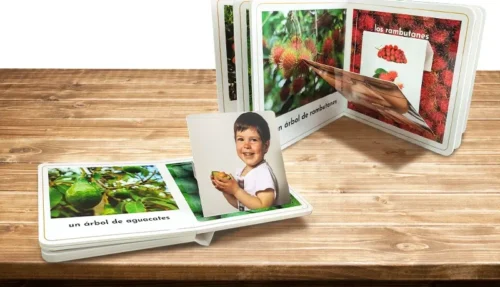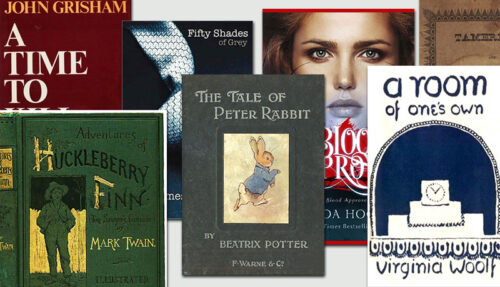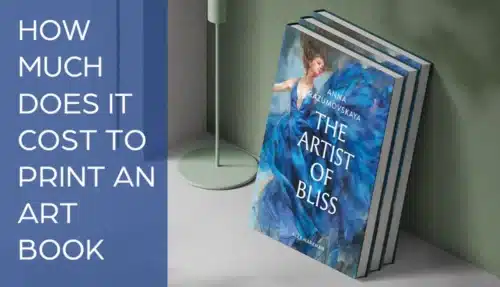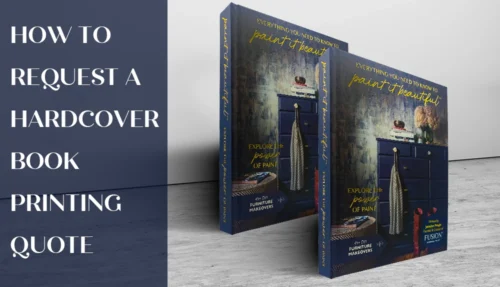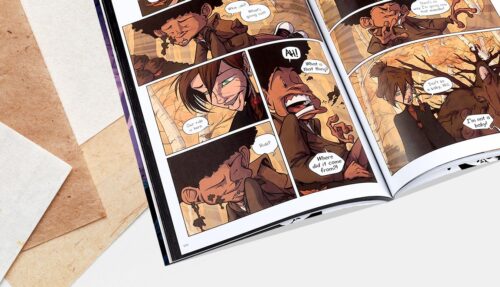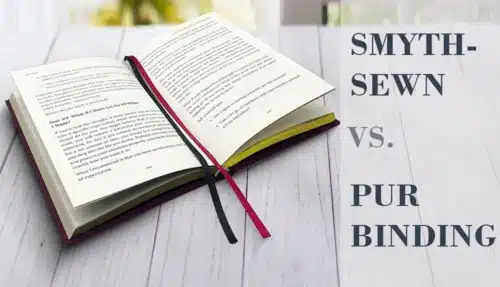Everything you need to get started including writing, illustration and design tips, content ideas, and printing costs
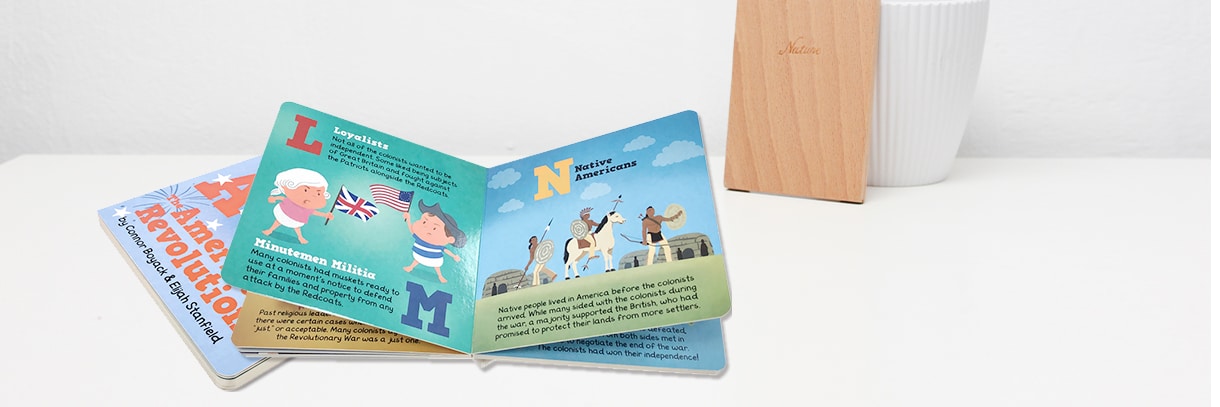
So, you want to self-publish a board book?
Well, you’re not alone! As one of the world’s most experienced board book printers, we know how popular these robust, colorful, delightful books are with both the tiny tots whose eyes light up with delight and laughter at the turn of each page, and the loving parents who read the text, discuss the pictures, and spend such important quality time with their little ones.
Because, while it’s true that children’s board books offer a vital introduction to literature, language, and communication for young infants, they have much more than educational value. They provide an opportunity for mum, dad, and baby to carve out a moment of precious, focused ‘together time’ in the midst of our increasingly hectic, distracted, Internet-driven lives. Psychologists agree that the physical closeness, the hug, and the multi-sensory experience of interacting with the book — touch, sight, sound, smell, and sometimes even taste with very young ones! — all contribute to the mental and emotional well-being and development of our children.
Most children’s board book writers, illustrators, and publishers have children of their own and have read dozens, if not hundreds, of board books. But you don’t need to be a parent to create a beautiful board book. It’s often enough to study the market, perhaps know other children in your family or among your friends’ families, or even just feel in touch with your own “inner child”.
The challenge of self-publishing children’s board books
If you write books for older children, teens, or adults, the gateway to self-publishing is wide open to you through DIY services such as Amazon’s KDP (Kindle Direct Publishing), Draft2Digital, Smashwords, Lulu, and IngramSpark. Once you’ve written your book and had it formatted and the cover art created, you can upload it online and have both an eBook and print-on-demand paperback (POD) ready in-store within a few days or even hours. While increasing numbers of successful self-published authors turn to offset printing to take advantage of the broader creative scope and cost savings it offers once they’ve built their readership, this is still the easiest way to get started.
But for the board book creator, neither electronic publishing or POD services can provide what’s needed. The fact that the only way to print a children’s board book of professional quality is through a traditional printer may be seen as a challenge by some. But it needn’t be. At Qin Printing, we’ve been working for decades with independent creatives just like you to help you realize your dreams and print beautiful children’s board books. We make the process as straightforward, enjoyable, and cost-effective as possible. And we pride ourselves on our unparalleled professionalism and customer-focused approach.
So, if turning your ‘roughs’ into a polished design and printing a gorgeous board book to self-publish is your ambition, you’re in the right place. Talk to us as early in the process as you can, and we’ll be delighted to share our experience and best advice. If you use a third-party designer to create your print files, we can help them, too, with handy templates and technical information. We also have our own in-house designers.
A snapshot of important facts to consider for a children’s board book
Before we go into the details, let’s just take a snapshot look at several important factors that it’s worth considering when thinking about your board book idea. These cover the four essential stages of creation:
- Writing
- Illustrating
- Designing
- Printing
We’ll look at each in turn. Exactly how you approach and manage each of these stages will depend on your interests, knowledge, skills, experience, and budget. Many children’s board book writers are also illustrators; some are designers, too. Others only write the text and then engage an illustrator and designer to make the artwork and compose the layout files ready for printing. But whether you fulfill one, two, or all of these roles yourself, they still need careful thought.
Tips for writing a children’s board book
- Don’t fall for the idea that writing for children is easy. You need to tell a great story and create memorable characters just as you would in any other book — but you have far fewer words in which to do it! So, take time to write, edit, and rework your text until it’s exactly right
- Be careful to avoid ‘talking down’ to your young audience. Yes, the text must be very simple. But it shouldn’t be insulting. Strive to make it ingenious, rhythmic, clever, surprising, and fun
- Remember that a board book for kids is very much a visual experience. So, you needn’t say everything in words. Leave room for the pictures to do a lot of the storytelling for you
- Make sure that you get your text read and critiqued by a professional editor with experience in children’s books — especially with the 1 to 4 years age bracket — and take account of any suggestions or advice they give you
- Remember that once you start to illustrate the book — or collaborate with an illustrator — the text might also evolve and change in response to the artwork. Be open to this collaboration. It’s part of the creative process and usually makes for a better book in the end
Tips for illustrating children’s board books
- Because children’s board books are for very young kids, the pictures must be bright, bold, and easy to understand. Avoid adding too much visual information or overcrowding the images
- That said, one of the joys of a board book is spotting surprise elements on each page. You can also include ‘running gags’ across the spreads. So, maybe there’s a pair of mice in the background of each scene: in one, they’re wearing rubber boots while splashing in puddles, in another, stealing cheese from the shelf, and in the next one, tucked up in their matchbox bed. You can have great fun playing with the possibilities!
- Illustrations should be linked to the text, but also part of the storytelling. Older children in the age bracket — who have just started to talk — will love to name and describe the characters and events shown. So, give them plenty of inspiration and opportunity to do that
- It’s a good idea to focus on a central character who appears in every spread to provide someone that the child can identify with and also visual continuity and recognition on each page
Tips for designing a children’s board book
- As you design the layout, it’s best to think in terms of ‘spreads’ — two pages facing each other — rather than in terms of pages alone. The way that board books are printed and made means this will make more sense when formatting for the print run
- Remember to discuss the technical details with the printer before finalizing your layouts as bleed zones, trim margins, and spine thickness will all need to be taken into consideration
- Text placement on the picture spreads is a vital creative decision in board book designing for children. The font must be easy to read, small enough not to interfere with the illustrations, but large enough to be bold and accessible to children just learning to read along. Sometimes speech bubbles are also a good idea. Don’t have the lines always in the same location, but add variety into the spreads
- Remember that while case covers are possible, most children’s board books have what we call ‘self covers’. That means that the cover is a paper sheet that simply wraps around and is secured to the front and back faces of the pages. You’ll need to know the thickness of the card stock and the number of boards to design the spine area
- All good printers — hello! — can provide you or your designer with ready-made templates to make the process easier. If needed, we can also create custom made templates tailored to your project. Just ask!
Tips for printing a children’s board book
- Board book printing can be expensive, especially in North America where the cost of paper seems to be constantly rising. Consider using an offshore printer like ourselves — we’re based in Shanghai — as we can almost always offer a much more cost-effective solution without sacrificing quality and safety standards
- Choose the best board for you project and your budget. There are two kinds: gray board and white board. Both are pressed fiber, laminated boards, but as the name suggests, one is gray and the other is white. Both produce similar results. The only visual difference is that with gray board, you’ll be able to see the natural color around the edge of the pages
- Choose your cover. As we mentioned before, you can have a ‘self cover’ or a case binding or ‘hardcover‘ on your children’s board book. The first option, which is the most common and the least expensive, has covers which are actually the exterior faces of the first and last board covered with a printed sheet. The second, which is rare, has a separate cover casing into which the boards are fixed
- Safety is important when printing books for children and there are laws regulating this aspect of things. We are deeply committed to children’s safety and comply with all North American and European safety standards. So, we cut boards with rounded off corners, for example, and use harmless UV varnishing rather than laminated plastic (which can peel off and be eaten!) to protect your books.
How much does it cost to print a children’s board book?
A board book needs a special printing process. Aside from being made from different materials and coming in different standard sizes to hardcover and paperback books, the printing and manufacturing processes are different, too. So, what exactly goes into the cost of printing a board book? Let’s look at two of the most common specifications and how they play out in terms of cost.
6″×6″ Self cover board book price
Specifications:
- Size: 6″×6″
- Color space: CMYK (full color) printing
- Cover and inner: 130 lbs (350 gsm) C1S cardboard paper
- Binding: self cover board book binding
Pricing table
| Quantity/Inner page amount | 500 | 1000 | 2000 | 3000 | 5000 |
| 12 pages | $756 | $1058 | $1850 | $2472 | $3712 |
| 16 pages | $972 | $1653 | $2340 | $3137 | $4596 |
| 20 pages | $1091 | $1537 | $2819 | $3816 | $5676 |
| 24 pages | $1130 | $1753 | $3029 | $4063 | $6038 |
7″×7″ Hardcover board book price
Specifications:
- Size: 7″×7″
- Color space: CMYK (full color) printing
- Cover: 40 lbs (157 gsm) gloss art paper wrap on 3 mm board, gloss lamination on both sides
- Inner: 130 lbs (350gsm) C1S cardboard paper
- Binding: hardcover board book binding
Pricing table
| Quantity/Inner page amount | 500 | 1000 | 2000 | 3000 | 5000 |
| 12 pages | $1260 | $1853 | $3272 | $4530 | $6897 |
| 18 pages | $1437 | $2224 | $3846 | $5273 | $7975 |
| 24 pages | $1694 | $2679 | $4641 | $6422 | $9707 |
| 30 pages | $1931 | $3021 | $5214 | $7166 | $10757 |
What can affect a board book’s printing price?
A range of factors change the price of board book printing, so when you’re thinking about self-publishing children’s board books, it’s worth considering these in advance. Things like size, page count, size of the print run, binding choices, and shipping must all be accounted for. Let’s look at each in turn.
- Size — the standard sizes for children’s board books are 6″ x 6″, 7″ x 7″, and 8″ x 8″. While we can customize the size of your board book, it will increase the costs. We can also cut the board into special shapes — such as letters or animal silhouettes — but, again, that will all add to the cost.
- Number of pages — board books are usually 12 pages long. That’s the cheapest option, too. If you multiply by units of 12 — so, 24, 48, etc — we can do that and it will be the least expensive way to make a longer book. Custom page counts — say, 16 or 21 — cost more.
- Size of the print run — this means how many books you get printed in one go. In short, the more copies that you print in one go, the lower the cost-per-unit. We can print just one book for you, or thousands. It’s up to you. But you should think about how many copies you feel confident you’ll sell before you place an order.
- Binding style — self cover bindings are the most common, popular, and least expensive. We recommend this binding style for almost all children’s board book projects. But we’re happy to do a hard case if that’s what you’d prefer. We can also add a sponge insert to make a softer, more tactile cover, do cut-outs, windows, flaps, and pop-ups. But they will, obviously, increase the price. If it’s your first experience self-publishing a children’s board book, it’s probably best to keep it simple until you have built up your market and distribution network and started making a profit on sales.
- Shipping — we can ship anywhere in the world, by air, land, and sea. Which option is the most economical for you depends on where you want the books shipped to and how many books — by weight, not number — you want to ship. We can also store books for you for up to a year and ‘drip feed’ batches of them by mail — even singly — as you need them.
As you can see, there’s a lot to think about, plan, budget for, and organize when you decide to self-publish children’s board books. But don’t let that put you off. Plenty of authors just like you do this every day. And once you’ve published one and you’ve learned the ropes, it gets easier and more straightforward. If you feel you’d like to learn more about self-publishing board books — especially the marketing and promotion side — read our useful article, How to Self-Publish a Children’s Board Book.
Talk to us!
As we said, we know this business inside out and have a ton of experience helping independent authors realize their board book dreams. Get in touch for an informal chat about what you have in mind and how we can help. And if you’re ready to go to print, we’ll happily give you a no-obligation quote for the job. We can’t wait to hear from you!






